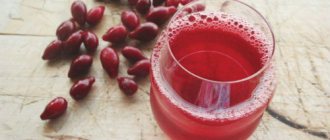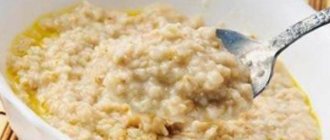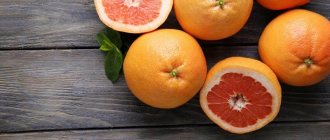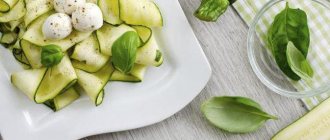Types and properties of red wine
There are several thousand varieties of red and white wines. The color of this drink ranges from light yellow to almost black. Its type and price depend on the aging time, grape varieties, and even on the place where the grapes grew, and how hot the summer was in a particular year.
Types of red look:
- varietal - made from grapes of a certain variety;
- blended - combined from different varieties of grapes.
Red wines are also available as table wines, dessert wines and aperitifs. They differ in sugar and alcohol content.
Calories and nutritional value
It is worth noting that the content of sugars and alcohols varies depending on the method of preparation and fermentation technique.
Nutritional value per 100 g of product:
- proteins 0.2 g;
- carbohydrates 0.3 g;
- water 88.2 g;
- alcohol 15.9 g.
This product does not contain fat and its calorie content is 68 kcal per 100 g of product. Also, as a result of complete fermentation, no more than 0.3% sugar remains in the product.
Important! Buy wine in glass bottles. Good
the drink will not be sold in cardboard or any other packaging. It is advisable that the glass is not transparent; sunlight can spoil the quality of the wine.
Chemical composition of dry red wine
Red wine contains a large amount of B vitamins, vitamin C and P. Vitamin P strengthens the walls of blood vessels, group B is beneficial for the gastrointestinal tract and nervous system. The well-known vitamin C (ascorbic acid) is indispensable in the fight against colds and viruses. It is no coincidence that a proven recipe for folk medicine for coughs is warmed red wine. And mulled wine with lemon, orange and cinnamon will save you from a cold if you are frozen.
What else is included in high-quality wine are microelements important for human health:
- Magnesium. Good for the heart. Magnesium deficiency in the body is determined by leg muscle cramps.
- Zinc. It is very useful for the genital area in men, this also applies to women. Lack of zinc in the body leads to infertility.
- Chromium. Promotes weight loss and breakdown of fats in the body.
- Rubidium. A rare microelement capable of removing radioactive substances from the body. That is why dry red wine is recommended for workers in hazardous industries.
Tannins also bring undoubted benefits: anthocyanins, catechins, thanks to which red wine acquires a pleasant tart taste, and flavonoids, which give a beautiful rich color. Anthocyanins are a natural preservative and antibiotic with antifungal properties. Catechins and flavonoids are antioxidants that help prevent cancer.
The alcohol content in dry red wine does not exceed 11%; the sour taste is imparted by malic, lactic and succinic organic acids.
Composition and calorie content
At first glance, it may seem that such a simple drink as dry red wine should have a simple chemical composition, but this is absolutely not the case. The grape drink contains about 86% water, 11% alcohol, and a small amount of glycerin . The composition of red dry also includes the following acids:
- Vinegar;
- Dairy;
- Amber;
- Lemon;
- Apple.
If we are talking about a high-quality natural drink, then it should be rich in the following components:
- Zinc, which takes part in tissue regeneration and also regulates acid balance;
- Magnesium, which can improve heart function;
- Chromium, which helps synthesize fatty acids in the body;
- Rubidium, which removes harmful radioactive and toxic substances from the body.
In addition, the wine contains vitamins C, B, B1, B2 .
0.1% of the composition is occupied by other substances, due to which each variety has its own unique taste, aroma and color.
There are four main types of flavonoids:
- Tannins;
- Anthocyanins;
- Flavonols;
- Catechins.
Let's take a closer look at each of them.
- Anthocyanins are natural coloring substances that give fruits and plants certain colors and shades. During fruit processing, grape skins release anthocyanin extracts, which determine the color of red and rosé wine. Anthocyanins have a bactericidal effect, which eliminates fungi from the drink.
- Catechins enter the grape drink from the seeds. It is these substances that impart a certain bitterness and astringency. If there are few of these substances in the drink, it will turn out tasteless and empty. Due to their antioxidant activity, catechins have a positive effect on the aging process and human health.
- Flavonols are those substances that perform almost the same functions as others. They also have antioxidant properties that give the drink its characteristic color without changing its taste.
- Tannins , as a rule, determine the quality of the drink. Very often, these substances are called the soul of wine or some kind of preservative. The more tannins a drink contains, the more noble its taste will be. It is worth noting that more tannins always predominate in a red drink than in a white drink. It is for this reason that white varieties are stored less and do not have such a tart specific taste.
Name and calorie content:
- White dry - 60 kcal;
- White semi-sweet - 75 kcal;
- Red dry - 65 kcal;
- Red semi-dry - 80 kcal;
- Dry rose – 65 kcal;
- Plum sweet - 106 kcal;
- Plum dry - 88 kcal;
- Brut champagne - 78 kcal;
- Sweet champagne - 93 kcal;
- Semi-sweet champagne - 85 kcal;
- Muscat - 88 kcal;
- Port wine - 154 kcal;
- Vermouth -157 kcal;
- Madera - 165 kcal;
- Dessert wine - 200 kcal.
Benefits of semi-sweet red wines
Red semi-sweet wines contain up to 14% alcohol. This wine has a sweet taste and a beautiful rich color. It also contains large amounts of the following microelements:
- fluoride is an undoubted benefit for teeth;
- potassium and magnesium - heart and muscle health;
- calcium - very useful for the musculoskeletal system;
- iron - increases hemoglobin in the blood;
- zinc and selenium - improve metabolic processes and have a positive effect on the genitourinary system.
- folic acid is useful in the first trimester of pregnancy for the formation of the fetal neural tube, however, it is better for pregnant women to refrain from drinking wine due to the alcohol content in it.
Semi-sweet and sweet wines have a fairly high sugar content, which means they contain a lot of carbohydrates and calories. Therefore, it is not recommended for those who want to lose weight to drink it.
Benefits of dry red wine: properties of anthocyanins
These substances represent one of the most important groups of flavonoids and are distinguished by their extensive pharmacological effects. In plants, they provide a certain color to flowers, fruits and some other parts. Depending on the set of hydroxyl groups, the resulting shade can be different - from blue to orange.
It is important to note that anthocyanins are a wide group of substances that differ in the structure of carbohydrate fragments, a set of sugars and other individual characteristics.
Scientific research has confirmed that anthocyanins have various beneficial effects on the human body:
- antioxidant – the study of these substances by various researchers has confirmed their abnormally high activity in the fight against free radicals, which is many times greater than the activity of other types of flavonoids;
- anthocyanins act as an inhibitor of fat oxidation, which helps protect the body from the negative effects of oxidative stress and, most importantly, significantly reduce the likelihood of developing cardiovascular diseases;
- antitumor - practical studies have shown the ability of these substances to reduce the rate of division of cancer cells;
- vasoprotective – the effect of red wine anthocyanins on capillaries helps reduce their permeability and fragility, thereby improving endothelial activity;
- anti-inflammatory - under the influence of these flavonoids, collagen production in the human body is normalized, platelet aggregation is suppressed and the production of prostaglandins is stimulated, causing relaxation of vascular smooth muscle. Anthocyanins also suppress inflammation in the lungs;
- fungicidal and antibiotic effects - this group of substances is capable of suppressing the synthesis of aflatoxins and destroying certain types of microorganisms.
Thus, studies by domestic and foreign authors confirm the high biological activity of natural anthocyanins contained in red grape varieties and the wine made from them. The most valuable effects of these substances are antioxidant, antitumor and cardioprotective.
It is important to note that the longer the wine ages, the lower its anthocyanin content. This is due not only to the polymerization of their molecules, but also to their gradual oxidation and precipitation in the form of an insoluble brown precipitate. Therefore, the beneficial properties of old wines are significantly less pronounced in comparison with young drinks.
Anticarcinogenic effect of grape phenols
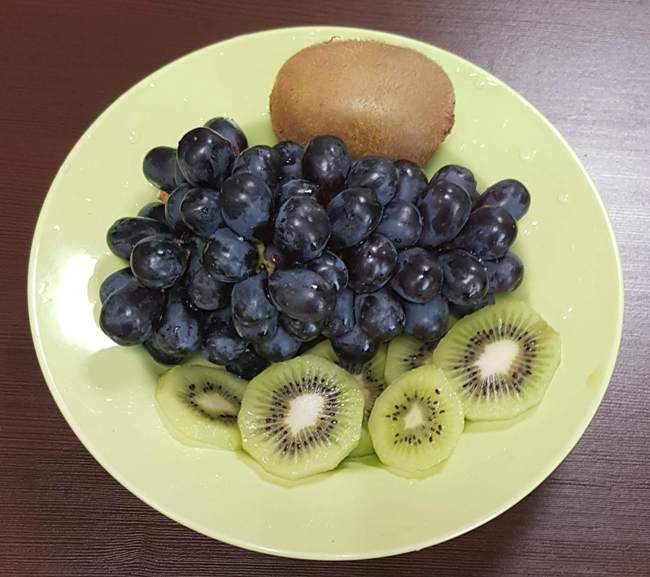
The fruits of red grape varieties contain a large number of phenolic compounds, which include the anthocyanins discussed above, and a whole range of other substances. They have a whole range of effects on the human body, among which not the least is the anticarcinogenic and antitumor effect.
Such effects of phenols contained in grapes are the subject of numerous scientific studies conducted by scientists from various organizations and countries.
Researchers attribute the ability of these substances to inhibit the formation of cancer cells and restrain the rate of their division to the fact that phenols suppress the activation of the transcription factor NF-kB, which is capable of accelerating tissue proliferation.
In laboratory studies, it was found that the use of concentrated grape extract helps to significantly reduce the number of focal growths in the liver tissue of laboratory rats, the accumulation of compounds in it that react with thiobarbituric acid, and the activity of complexes that synthesize bile acids.
It is important to note that various types of grape phenols show effectiveness in the treatment of various types of malignant tumors.
Their effectiveness has been proven for the following cancer lesions:
- colon tumor;
- proliferation of colon epithelial cells;
- malignant breast tumor;
- various types of melanoma;
- hepatoma;
- neoplasms on blood vessels.
This is interesting! Dry red wines produced by the carbon dioxide moderation method proposed by the French winemaker Flanzy are distinguished by their bright ruby color, original aroma and are superior in quality to wines produced traditionally.
The essence of the method is as follows. Undamaged grapes are loaded into the container and filled with carbon dioxide. Under the resulting conditions, intracellular fermentation of berry juice occurs under the influence of its own plant enzymes. The result is high-quality wort. The disadvantage of this method is the long duration of the fermentation process.
Properties and effects of resveratrol
As noted above, one of the most valuable substances contained in red grape wines is resveratrol. It is a steroid metabolite from the group of polyphenols, a derivative of trans-stilbene, which is synthesized in various parts of grapes as a reaction to the attack of harmful microorganisms and fungi. At its core, resveratrol is a natural antibiotic.
In the human body, this substance has the following types of effects:
- weak estrogenic activity due to the similarity of the structures of resveratrol and the “female hormone”;
- high antioxidant activity, effective protection against oxidation of low-density lipoproteins;
- inhibition of platelet aggregation and, as a result, reducing the likelihood of thrombosis;
- stimulation of arachidonic acid metabolism;
- improvement of the general condition of the cardiovascular system;
- increasing the production of cGMP in the body, which is necessary for relaxation of the arteries;
- decreased activity of mitogen-activated proteins, which have the ability to stimulate tissue proliferation in the body;
- preventing the proliferation of vascular smooth muscle – one of the mechanisms for the development of atherosclerosis.
The most interesting from the point of view of researchers is the anticarcinogenic effect of resveratrol, associated with its antioxidant and estrogenic activity. Also important is the ability of this substance to intercept oxygen in active form, carried by the blood plasma to the tumor or located directly in the tissues of the tumor.
Resveratrol also suppresses the formation of radicals, peroxide compounds, and enzymes. It has a destructive effect on the cells of some types of tumors. This substance also increases the activity of the enzyme mapkinase, which helps regenerate and repair nerve cells, and has phytoestrogen properties.
Many researchers believe that the cardioprotective and anticarcinogenic effects of dry red wine on the human body are directly related to the content of resveratrol in trans form. Also, much attention has been drawn by scientists to its interaction with the protein sirtuin, which some authors call a “drug against old age.”
Research shows that when sirtuin enters a certain area of the hypothalamus, it can have a pronounced effect on the entire endocrine system of the body, thus regulating the production of hormones in it, including those that cause age-related changes in the body.
And a number of studies have shown that resveratrol can have a positive effect on the activation of sirtuin. However, this relationship has not yet received unambiguous confirmation. At the same time, many scientists speak out about the relevance of further research on these substances and their mutual effects.
The substance piceannol is of no less interest to researchers than resveratrol - it has almost the same composition and structure, the difference is the content of one additional hydroxyl group.
During study and practical experiments, piceannol showed the following properties:
- immunosuppressive;
- inhibition of protein kinase formation;
- antitumor, including anti-melanoma;
- anti-leukemic.
Phenolcarboxylic acids are an important component of the antioxidant and antiseptic complex of red wines
Phenolcarboxylic acids contained in red grape wines are derivatives of aromatic hydrocarbons. These compounds are part of the so-called tannins - natural components that have anti-inflammatory, hemostatic, astringent and antiseptic effects. Such acids, in particular, have antioxidant and disinfecting properties.
The most valuable of the phenolcarbon compounds found in red wine are the following:
- nicotinic – participates in cellular respiration, regulatory processes in the nervous system, in protein and cholesterol metabolism;
- benzoin and salicylic acid – have an antiseptic effect and are natural preservatives;
- orotic – important for the absorption of proteins, supports the condition of the liver;
- protocatechuic – necessary for the occurrence of geometric isomerism reactions;
- gallic – important for developing the taste of red wines;
- vanillin, lilac - also participate in the formation of the taste and smell of drinks.
Another type of phenolcarboxylic acid, also found in dry red wine, is chlorogenic acid. It is an ester of caffeic acid and is involved in the processes of regulating the ripening of grapes. It has been proven that the synthesis of chlorogenic acid is enhanced when bacteria enter the fruit.
Research has revealed that it is used by the plant as a natural antiseptic. The high antioxidant activity of this compound has also been proven - it effectively interrupts already running auto-oxidation reactions in food products and thereby helps preserve its quality characteristics.
This is interesting! Fermentation in winemaking is the process by which the sugar contained in the must is converted into alcohol. Natural yeast from the skins of grapes is used, as well as artificially grown yeast colonies added to the must in the form of a starter.
Wine therapy, its essence and methods
The beneficial properties of red wine attract the attention of many researchers; in addition, they are also used in practical health-improving activities. In particular, after the discovery of a high content of polyphenols, which are powerful antioxidants, in grape berries, they themselves and products based on them, including wine, began to be used for cosmetic and health purposes.
This marked the beginning of a new direction in alternative medicine - wine therapy. The positive effect of such therapy on the human body is due to the combination of a whole complex of micro- and macroelements, as well as vitamins, which are contained in various parts of the grapevine. The main goal of wine therapy is to slow down the aging of the body by absorbing free radicals.
The main methods used by adherents of this direction are:
- baths and compresses using grape marc;
- various ways to use seed oil from grapes and their crushed skins;
- grape diet.
The founders of wine therapy were Mathilde and Bertrand Thomas, French entrepreneurs who released the first batch of skin care products containing grape extracts in 1994. Subsequently, the Thomas couple founded the Institute of Beauty and Wine Therapy in Bordeaux.
A comprehensive health program was developed here, including 4 subprograms:
- relaxation and relaxation - wine baths and barrels of wine are used here, Barrick baths filled with grape marc and seeds, intensive wine showers, wraps with wine and honey;
- rejuvenation - this subprogram is a wine lifting using specialized compounds;
- figure correction – grape diet, massage with grape oil, endermology are used here;
- treatment course using special techniques and drugs.
The use of wine therapy helps increase skin elasticity, has a lifting effect, overall skin health, filling the body with nutrients and antioxidants.
Plant polyphenols are poorly absorbed in the intestines, so their beneficial properties are inaccessible to humans. In wine, these substances are in an easily digestible form.
This is interesting! Red wine varieties - Myskhako Merlot, Myskhako Cabernet, Myskhako Pinot noir - are favorable for wine baths, wine wraps and wine massages, as they have higher strength, sugar content and acidity compared to white wines. These wines can increase the level of hemoglobin in the blood and reduce the formation of blood clots.
Composition and beneficial properties of white wine

White wine is made not only from white grapes - other varieties are also produced. But, thanks to the removal of the peel and seeds, the liquid does not turn dark. This drink is bottled immediately after fermentation is complete, so the taste is more refined.
White wine contains the largest amount of vitamins B2 and C. In addition, it has less calories than red wine.
Did you know? In Bulgaria, where wine is a traditional drink, a hundred songs have been written about red wine and only one about white wine. It contains these words: “O white wine! Why are you not red..."
Dry white wine significantly reduces cholesterol levels in the body and strengthens blood vessels. Its ability to fight senile dementia and strengthen memory has also been noted.
The grape itself is very healthy, and during the fermentation process many of its properties are significantly enhanced. Therefore, a glass of grape drink perfectly fights viruses and colds, helping to increase immunity during the cold season.
Dry red wine: the object of close attention of scientists
Dry red wine is, according to statistics, one of the most popular alcoholic drinks in the world. It is traditionally widespread in the wine-making centers of Europe - in France and Italy, and sufficient volumes are also produced in Germany and Spain. The production of red wines of various strengths is also widespread in the former Soviet republics - these are, first of all, Moldova and the Caucasian countries. In these regions, the largest volumes of consumption of this type of alcohol are observed, and here we are talking not only about factory-made wines, but also about home-made drinks.
At the same time, as medical experts note, many countries where the production and consumption of red wine is one of the strong traditions are characterized by a low prevalence of cardiovascular diseases and their deaths, long life expectancy and a high overall level of health of the nation.
And many experts associate this specifically with the consumption of red wines - this opinion, in particular, is shared by French doctors. The possible veracity of this point of view is also indicated by the fact that the cuisine of many wine-rich countries is rich in saturated fats, simple carbohydrates and sugars. Moreover, as already noted, the incidence of heart problems in France or Italy is significantly lower compared to other countries with approximately the same standard of living.
Due to this contradiction - large volumes of alcohol consumption and at the same time a high level of health - the properties, nutritional value and characteristics of the effects of red wine on the body have repeatedly become the object of scientific research. Both domestic and foreign researchers have paid much attention to this product at different times.
To date, there is still no clear answer about the effect of wine made from red grape varieties on the body. However, there is already reliable information that certain substances contained in this drink have a pronounced positive effect on human health and help in the fight against some serious diseases.
Is wine always good for you and who should not drink it?
First of all, do not forget that wine, no matter red or white, is still an alcoholic drink. If used excessively, it can be addictive and lead to alcoholism - a terrible grief for the drinker and his family. Excessive drinking of alcohol can also cause gout, liver cirrhosis, diabetes, arthritis and arthrosis. Red semisweet contains a lot of calories, which leads to excess weight gain. And dry white in large quantities is harmful to tooth enamel. A fat, toothless alcoholic is not a particularly attractive sight.
Despite the fact that wine contains a lot of folic acid, pregnant women in the first trimester should not consume it. Do not forget that this is an alcoholic drink that can cause great harm to the unborn baby. It is better to take folic acid in tablets.
Children should not drink wine, even for medical purposes. For a cold, it is better to offer your child tea with raspberries or chamomile infusion.
Also, do not forget that after drinking wine there can be a very painful hangover. There are people who get quite a headache even after one glass of red. This is due to the fact that red wine contains, albeit in minute quantities, hydrocyanic acid. People with liver and kidney diseases should not drink wine in any quantity. This drink is also contraindicated for those suffering from allergies.
Consider the rules for drinking wine and do not exceed the norm. Then it will bring undeniable benefits. Also, choose your drink carefully, because all of the above information is valid only for a natural grape drink. It is unlikely that wine of dubious quality from tetrapacks will benefit your health.
Useful properties and consumption rates
It is this question that causes a lot of controversy about this drink. It is very difficult to determine the degree of influence on the body, because it depends on many factors. But there is no need to doubt the benefits of use.
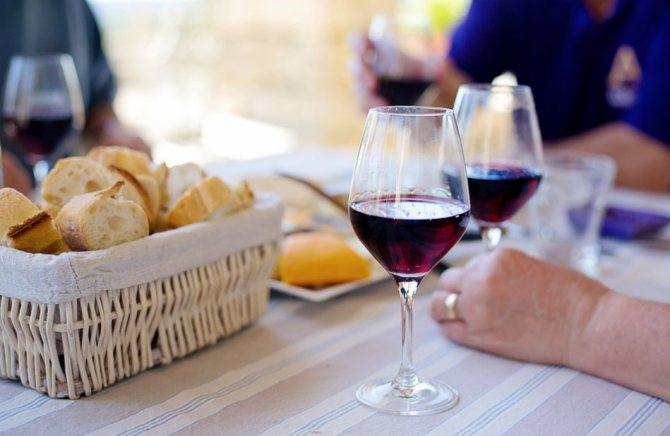
Beneficial features:
- Reduces the risk of stroke. People who consume red wine in their diet are less likely to suffer from this risk. Thanks to this drink, it is possible to reduce the likelihood of blood clots forming in blood vessels by 50%.
- Reduces the risk of myocardial infarction. According to research, moderate drinkers are 30% less susceptible to this disease. This is all due to the fact that wine contains tannins, which protect against heart disease.
- Stimulates the digestive tract, increases appetite, maintains normal levels of acidity in the stomach.
- Helps relieve fatigue, tension, tones and calms.
In addition to the obvious effects on the body, this drink is also suitable for skin care and cataract prevention.
It has antiallergic and bactericidal properties, which scientists have repeatedly confirmed. Find out how to lose weight with wine, whether red wine causes drowsiness and leads to alcoholism.
It is a tonic drink that increases the body's ability to resist infections, thereby boosting your immunity. In addition, it normalizes sleep, affects the gums, strengthens them and prevents caries.
It is no secret that it is often used in the treatment of colds and viral diseases. In addition, it is a preventative against cardiovascular diseases.

The consumption rates for this alcoholic drink vary differently for each person. A single dose for men is 0.5 liters. Women have much less resistance to alcoholic beverages, so one-time consumption of a drink in the diet is half as much.
Ideally, this could be one glass of wine with lunch. It is also worth considering that it is necessary to pause between drinks for several days.
Did you know? Two thousand years BC, in Mesopotamia, China and Ancient Egypt, wine was used as medicine.
Contraindications
Excessive indulgence in this drink threatens not only a hangover in the morning, but also alcoholism. An increased rate has a bad effect on physical condition; tannin can cause severe headaches.
It will also contribute to diseases of the gastrointestinal tract and nervous system. There is also a risk of stomach ulcers (with chronic alcoholism). Drinking can increase your blood pressure, which can trigger heart attacks.
The main danger for people who abuse alcoholic beverages is the risk of developing cancer tumors. Alcohol is contraindicated for people with coronary heart disease, pancreatitis, cirrhosis of the liver, as well as people who are depressed.
Important! Not all wines can be aged. Some varieties are usually consumed with short aging periods, and a significantly smaller number of wines are subjected to long-term storage.
Types and specifics of production
The color of the wine depends on the grape variety used in production. White grapes are used to make white wine. For red, take dark varieties. Rosé wines are the result of a mixture of one and two varieties.
The second classification divides grape wines into the following subgroups:
- dry;
- semi-dry;
- semi-sweet;
- sweet;
- fastened;
- sparkling.
Each variety has a different percentage of alcohol and sugar. It is this classification that is most often used by researchers of the health benefits of wine.
The production of the drink is based on the fermentation process of grapes. As a result, a special fungus is formed in the wort - yeast, which converts the resulting sugar into alcohol and carbon dioxide. Fermentation can take place either naturally (under the influence of the yeast contained in the berries) or artificially - with the help of additives.
White and red: which is healthier?
If we delve deeper into this issue, the first thing to note is that both red and white wines are healthy in the right doses. Cooking technology, grape variety and cooking method will help us determine the beneficial qualities of these species.

White varieties are classified as light, because they are made exclusively from the juice of the pulp of the berries. Red has a number of advantages. The technology involves the participation of all components of grapes - pulp, skin and grains, thanks to which the wine is saturated with flavonoids. Because of this, it is generally accepted that red wine is more beneficial, since it has a much broader effect on the body, the circulatory system and a number of other organs.
White wine is often recommended for women, as it is much lighter than red and does not cause strong intoxication. However, scientists have also proven its benefits, which are slightly inferior to the benefits of red. From all this it follows that both types are useful, but red is much more popular and is used in a variety of cases of diseases and prevention.
In conclusion, I would like to add that you should not look for reasons or reasons for drinking wine of any kind. It is enough to introduce it into your diet, enjoy its taste and at the same time take care of your health. With a modern selection of varieties and brands of grape products, it will not be difficult for you to choose a drink to suit your taste. The main thing is to know when to stop and not get carried away.
Wine Food Drinks The benefits and harms of drinks The benefits and harms of alcoholic beverages Alcoholic drinks

